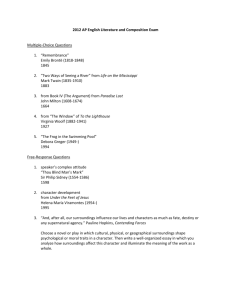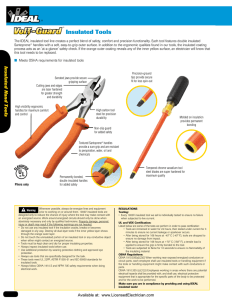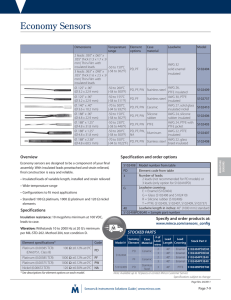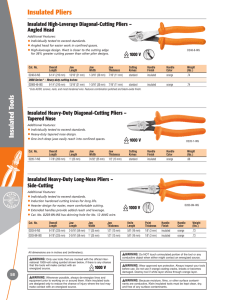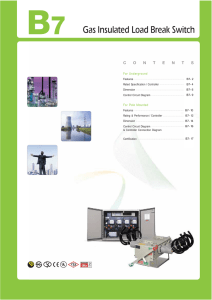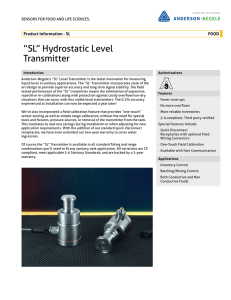Solutions to Problems in Recitation: 5 10/02/03
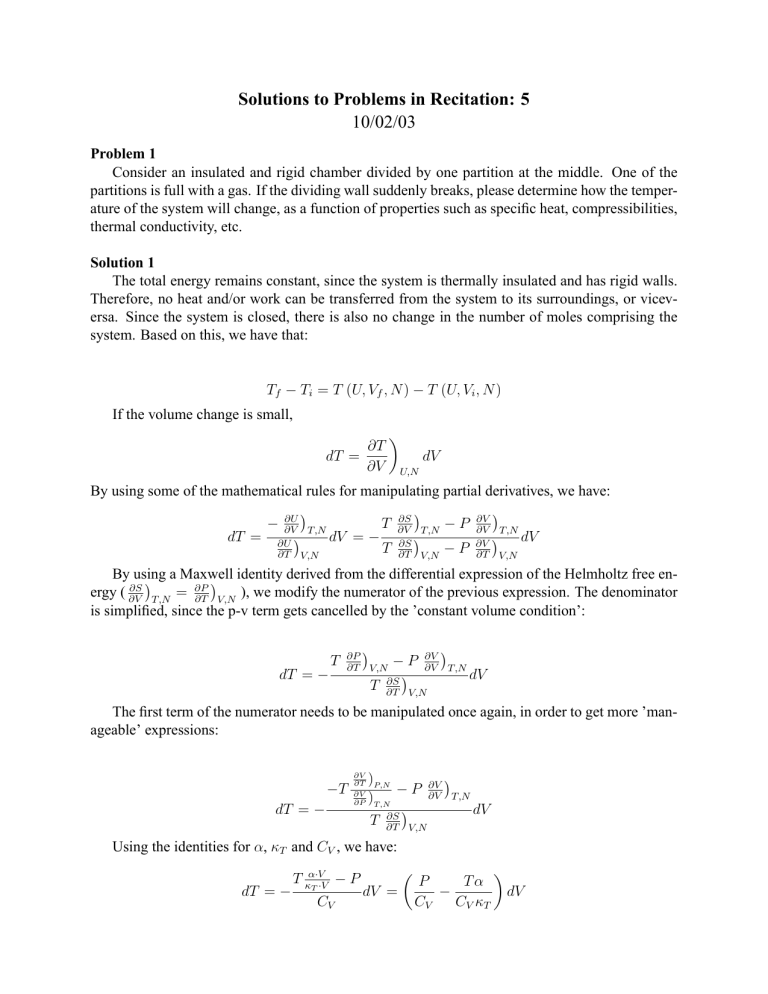
Solutions to Problems in Recitation: 5
10/02/03
Problem 1
Consider an insulated and rigid chamber divided by one partition at the middle. One of the partitions is full with a gas. If the dividing wall suddenly breaks, please determine how the temper ature of the system will change, as a function of properties such as specific heat, compressibilities, thermal conductivity, etc.
Solution 1
The total energy remains constant, since the system is thermally insulated and has rigid walls.
Therefore, no heat and/or work can be transferred from the system to its surroundings, or vicev ersa. Since the system is closed, there is also no change in the number of moles comprising the system. Based on this, we have that:
T f
− T i
= T ( U, V f
, N ) − T ( U, V i
, N )
If the volume change is small, dT =
∂T
�
∂V
U,N dV
By using some of the mathematical rules for manipulating partial derivatives, we have: dT =
− ∂U
∂V
�
�
T,N
∂U
∂T V,N dV = −
T
T
∂S
∂V
∂S
�
� T,N
∂T V,N
−
P
− P
∂V
∂V
∂V
�
� T,N
∂T V,N dV ergy (
∂S
�
∂V T,N
= ∂P
�
∂T V,N
), we modify the numerator of the previous expression. The denominator is simplified, since the p-v term gets cancelled by the ’constant volume condition’: dT
= −
T
∂P
�
∂T V,N
T
−
�
P
∂V
∂V T,N
∂S
∂T V,N
� dV
The first term of the numerator needs to be manipulated once again, in order to get more ’man ageable’ expressions: dT = −
− T
∂V
∂T
∂V
∂P
)
P,N
)
T,N
T
− P
�
∂S
∂T V,N
∂V
�
∂V T,N dV
Using the identities for α , κ
T and C
V
, we have: dT = −
T
α · V
κ
T
· V
C
V
− P dV =
�
P
C
V
−
C
T
V
α
κ
T
� dV
For a monoatomic ideal gas we have:
P V
=
NRT
C
V
=
α =
κ
T
=
3
2
NR
P V
NR
NR
P V
· T
P
Substituting, and setting everything as a function of T , V , N and R , we thus have: dT =
�
P
C
V
−
C
T α
V
κ
T
� dV =
�
2
3
·
T
V
−
2
3
·
T
V
� dV = 0
This would not hold for the case of real gases, for which the energy is not only a function of temperature, but also of the volume (for example, the van der Waals fluid.).
It is interesting to note that, always C
V
>
0 and κ
T
>
0
(necessary for the stability of a ther modynamic system). Usually, α is also positive (water is an exception, at T ∼ 0 0
C ).
This means that a free expansion, for many kinds of materials, would generally lead to a de crease in the temperature of the system, provided the system is isolated from its surroundings (so it cannot exchange work, nor heat.).
Problem 2
In class we saw that, for an adiabatic pull, with force, F , the change in temperature under constant force is:
� �
∂T
∂F
S
=
− Lα
L
C
F
T
What is the relationship between C
F and C
P ?
Solution 2
Using the relationship
∂X
�
∂f
Z
=
∂X
�
∂f
Y
+
∂X
�
∂Y f
·
∂Y
�
∂f
Z
We find that
C
P
−
T
C
F =
∂S
∂F
�
T
·
∂F
�
∂T
P
From class, we also know that
∂F
�
∂S
�
∂L
�
∂T
∂F
P
T
=
∂T
∂F
�
∂T P can be manipulated using the chain rule:
=
∂F
∂L
∂T
�
� P
∂L P
=
F
=
∂F
�
∂L
L
P
·
·
α
L
∂L
∂T
�
P
Since K = ∂F
�
∂L P and
∂L
�
∂T P
= ∂L
�
∂T F
= L · α
L , we finally have:
C
P
−
C
F
T
=
L
2
α
2
L
·
K
Thus, C
P
> C
F
. This means that the entropy of a system under isobaric condition is greater than when the system is subjected to tension along one direction.
Note that K is the Elastic Constant corresponding to the Hooke’s Law. It can be easily related to the Young’s Modulus: K ∼ E · L
Per mole, using
L m
≈ (
V m
)
1
/ 3 ∼ 1 × 10 − 2 m/mol
And using α
L
∼ 1 × 10 − 6 we have: and K ∼ 1 × 10 9 · L c
P
− c
F
T
∼ L
3 m
· α
L
· E ∼
�
1 × 10 − 6
�
·
�
1 × 10 − 6
�
·
�
1 × 10 9
�
∼ 1 × 10 − 3

